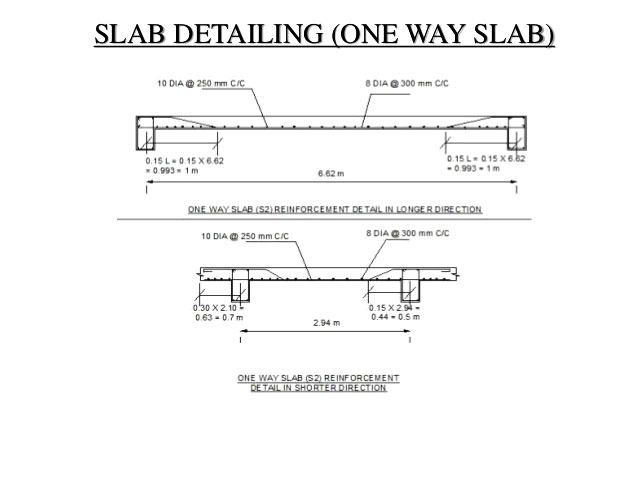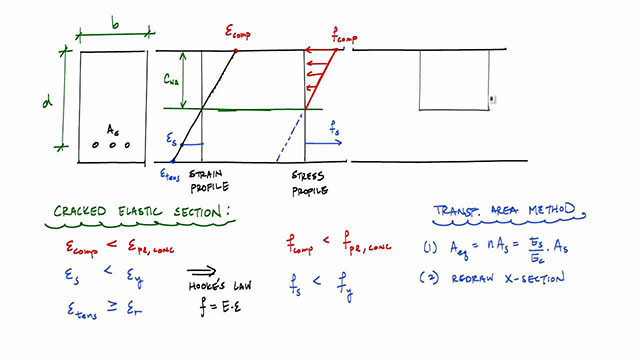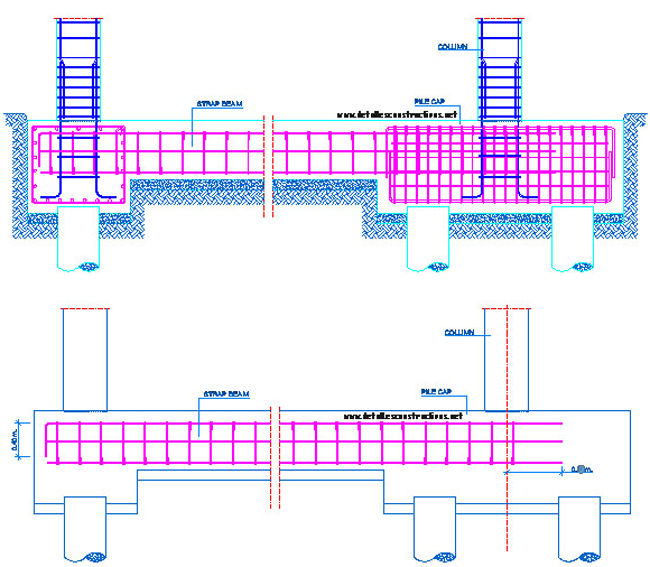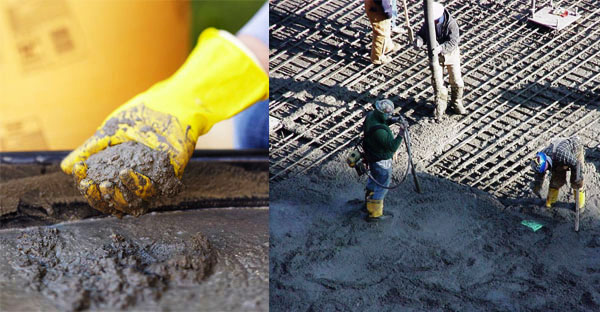Reinforcement detailing of a slab is performed on the basis of its support conditions. Support to slab is generally provided through walls or beams or columns.
A slab is called one way if the supported is provided from two opposite edges. So, the prime load is transmitted onward the spanning direction. Here, the proportion of longer extent to shorter extent is over 2. In one way slab, one side is greater than the other one. In one way slab, the bending occurs mainly in one direction only (spanning direction).
Consequently, the main reinforcement is necessary to withstand the moments produced and designed for the same. The main reinforcement is arranged at the bottom of the slab that is usually described as the tension face.
In one way slab, as one side is larger as compared to the other one, the greatest load is carried by the larger side. To give more support on the larger side, main reinforcement is set perpendicular to that side or parallel to the shorter direction. Distribution steel is arranged in the extended direction that will not be very useful for carrying any load.
In one way slab, the main reinforcement is calculated with a formula (In limit state design) and to obtain the result the comparison is made between the comparing compressive force and tensile forces.
Ast = 0.5 Fck/Fu[1-√1-2.6Mu/Fck.b.d]b.d
and the distribution steel is calculated as
0.15% of Ag, for mild steel.
0.12% of Ag, for tor steel.
Where, Ast denotes Area of the steel in tension.
Fu denotes Ultimate strength of steel.
Mu denotes Ultimate moment of resistance.
b denotes Breadth of the slab section.
d denotes Depth of the slab section.
Ag denotes Gross area of the section.

Article Source : www.dailycivil.com
~~~~~~~~~~~~~~~~~~~~~~
Published By
Rajib Dey
~~~~~~~~~~~~~~~~~~~~~



